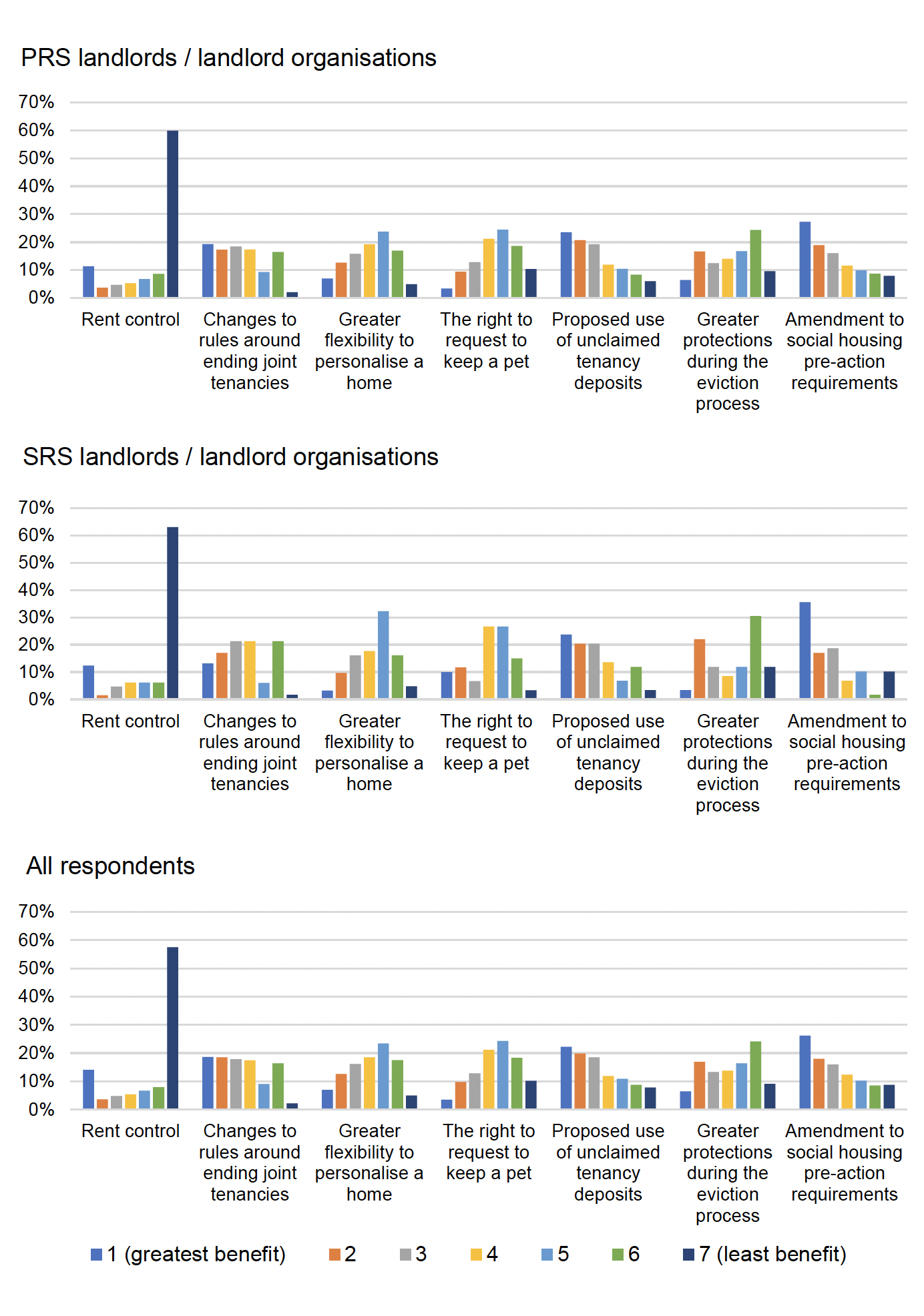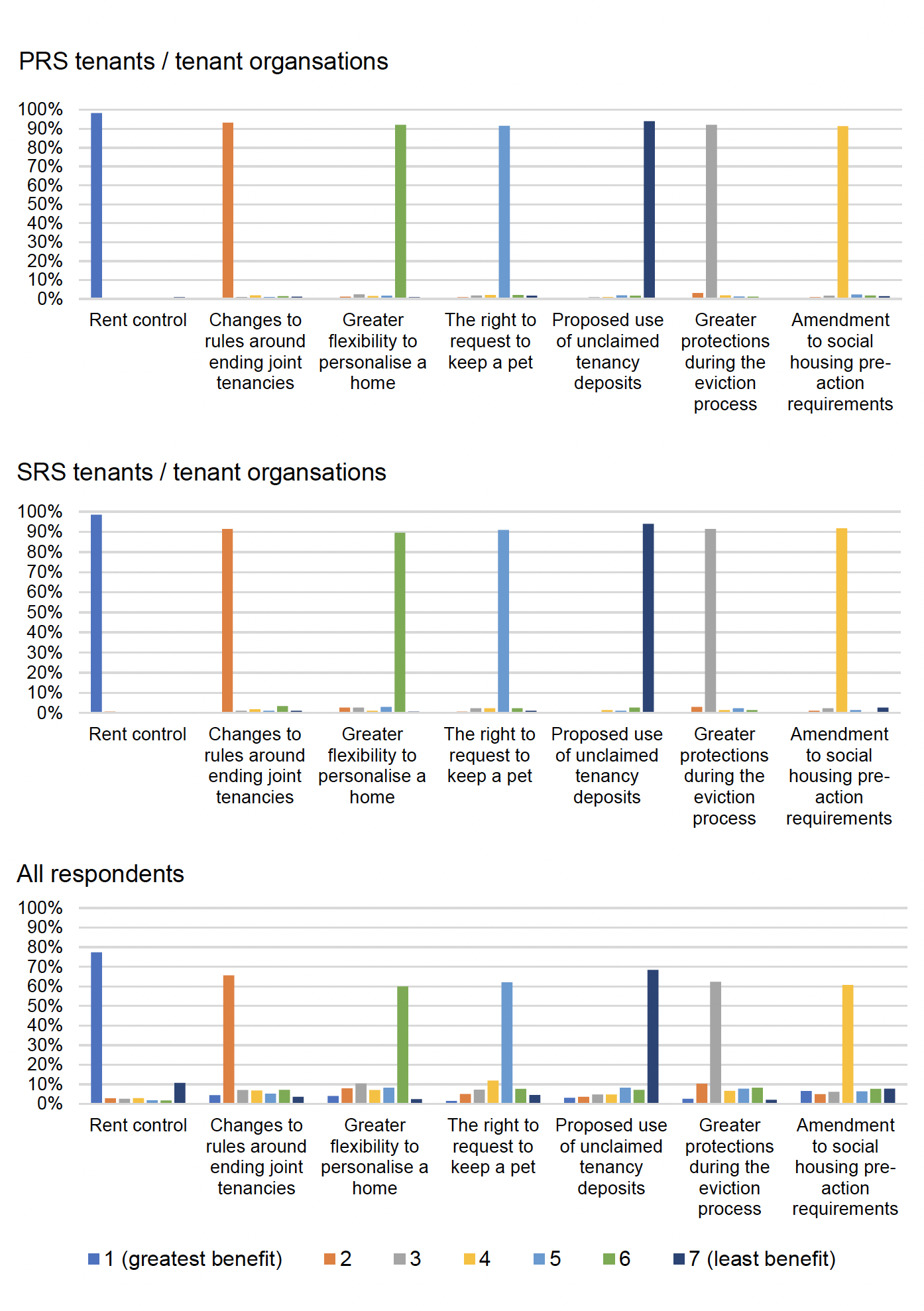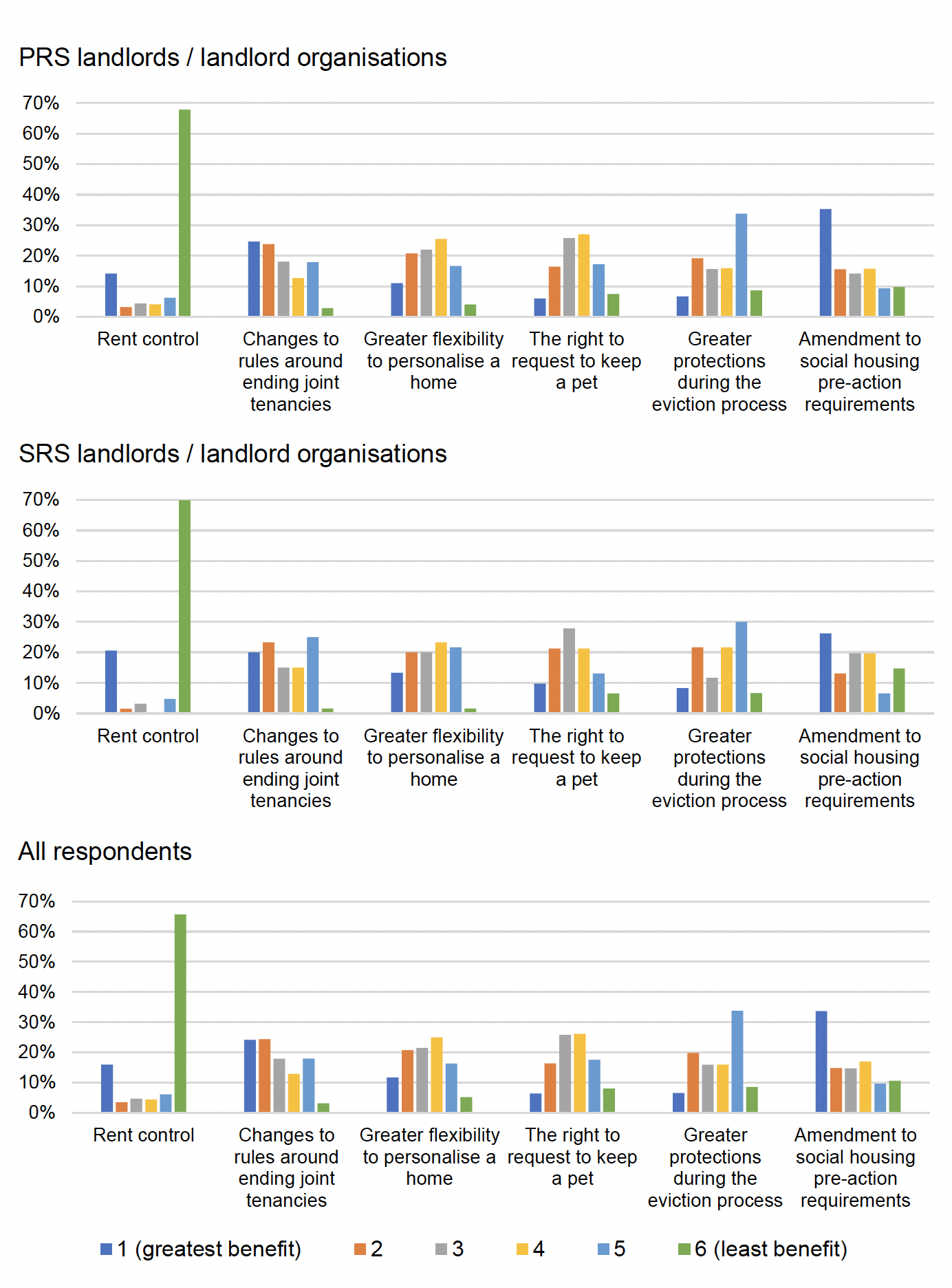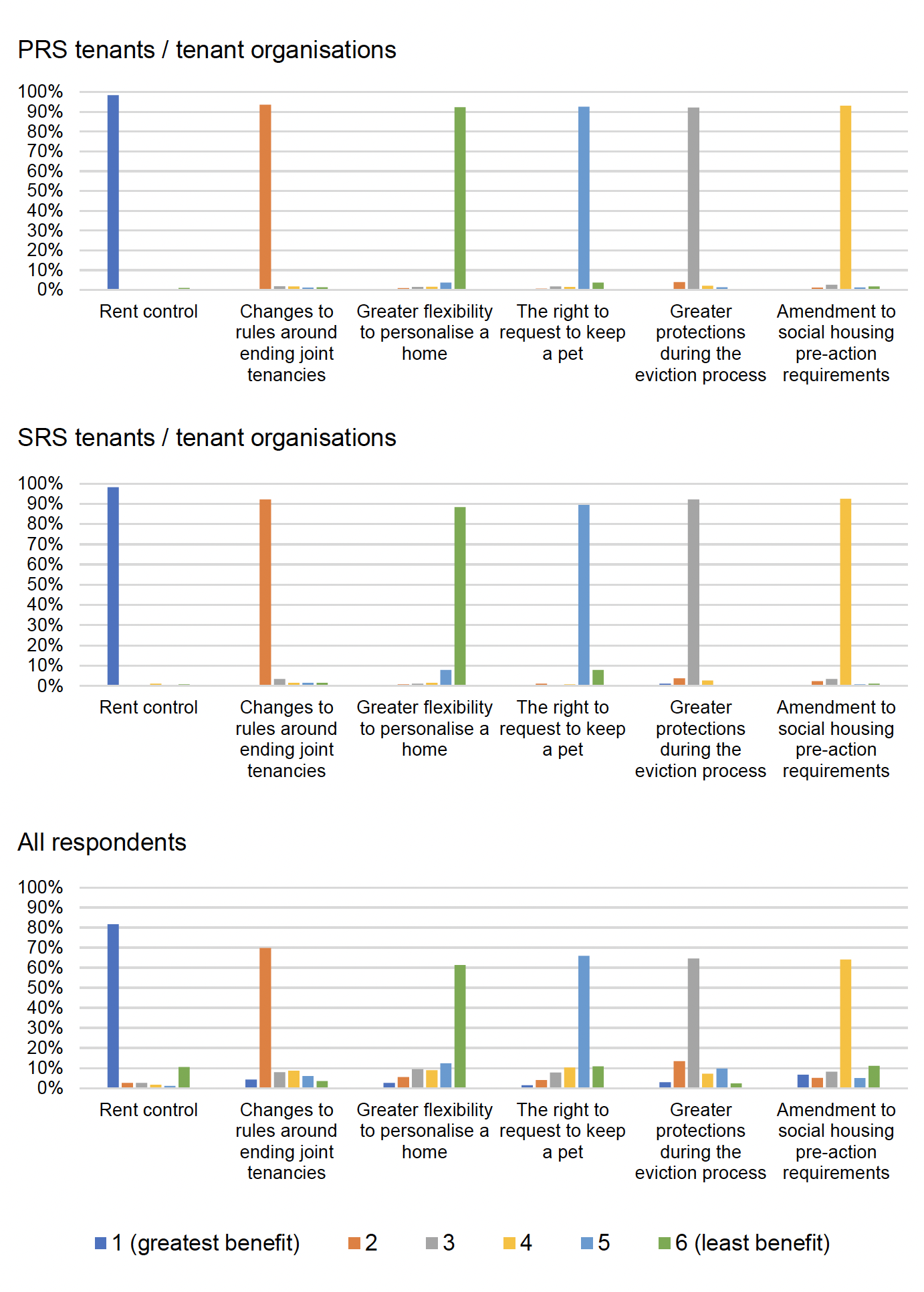Rented sector reform: landlord and tenant engagement questionnaire - analysis report
Analysis of responses to the landlord and tenant engagement questionnaire on proposals for rented sector reform.
10: Potential costs and benefits
The final set of questions asked respondents to rank the impact of the proposals overall, in terms of overall benefit to landlords and tenants, and then financial impact on landlords and tenants. Questions 33 and 35 were focused on the benefit/financial impact for landlords, and Question 34 and 36 were focused on tenants.
At Questions 33 and 35, the charts present the views of a combined group of PRS landlords and landlord organisations, a corresponding group of SRS landlords and landlord organisations and of all respondents. At Questions 34 and 36, the charts present the views of a combined group of PRS tenants and tenant organisations, a corresponding group of SRS tenants and tenant organisations and of all respondents. Full results for all respondent groups are included in Annex A.
Please note that, while tenants, and those from the ‘None of the above’ and ‘None selected’ groups tended not to answer the questions about landlords, a greater proportion of landlords answered the questions about tenants.
Question 33 – Please rank the proposals in terms of which you feel will bring the most overall benefit to landlords, from most beneficial to least beneficial.
Overall, the patterns of response across the three groups, as set out in Chart 5 below, were not dissimilar. In particular, there was a clear view that rent control policies will be the least beneficial to landlords; in each grouping, a majority of those answering the question ranked rent controls as least beneficial.
In terms of the proposals that respondents saw as most beneficial, amendments to social housing pre-action requirements and the proposals relating to the use of unclaimed tenancy deposits tended to be seen as most beneficial.
Question 34 – Please rank the proposals in terms of which you feel will bring the most overall benefit to tenants, from most beneficial to least beneficial.
In terms of benefits to tenants, as set out in Chart 6, the pattern of answers was very different, with a very clear consensus around the ranking of the policy options from the PRS and SRS tenant/tenant organisations groups.[8] The rent control proposals were seen as most beneficial, followed by changes to the rules around ending joint tenancies and then greater protections during the eviction process. The proposed uses of unclaimed tenancy deposits were seen as least beneficial, followed by greater flexibility to personalise a home. The views of all respondents were slightly less emphatic, albeit the overall pattern and ranking remained the same.


The pattern of response to the questions relating to financial impact was broadly in line with that for overall benefit, suggesting that respondents tended to see the two as linked strongly.[9]
Question 35 – Thinking of the financial impacts, please rank the proposals with regard to the potential impact for landlords, from most beneficial to least beneficial.
As at Question 33, the patterns of response across the three groups, as set out in Chart 7 below, were not dissimilar. In particular, there was a clear view that in relation to financial impact, rent control policies will be the least beneficial to landlords; in each grouping, a majority of those answering the question ranked rent controls as least financially beneficial.
In terms of the proposals that respondents saw as most beneficial, amendments to social housing pre-action requirements and the proposals relating to ending joint tenancies around tended to be seen as most financially beneficial.
Question 36 – Thinking of the financial impacts, please rank the proposals with regard to the potential impact for tenant, from most beneficial to least beneficial.
In terms of benefits to tenants, at Chart 8, there was again a very clear consensus around the ranking of the policy options from the PRS and SRS tenant/tenant organisations groups. The rent control proposals were seen as most financially beneficial for tenants, followed by changes to the rules around ending joint tenancies and then greater protections during the eviction process.
Greater flexibility to personalise a home was seen as least financially beneficial to tenants, followed by the right to request to keep a pet.
The views of all respondents were slightly less clear, albeit as at Question 34, the overall pattern and ranking remained the same.


Contact
Email: housing.legislation@gov.scot
There is a problem
Thanks for your feedback